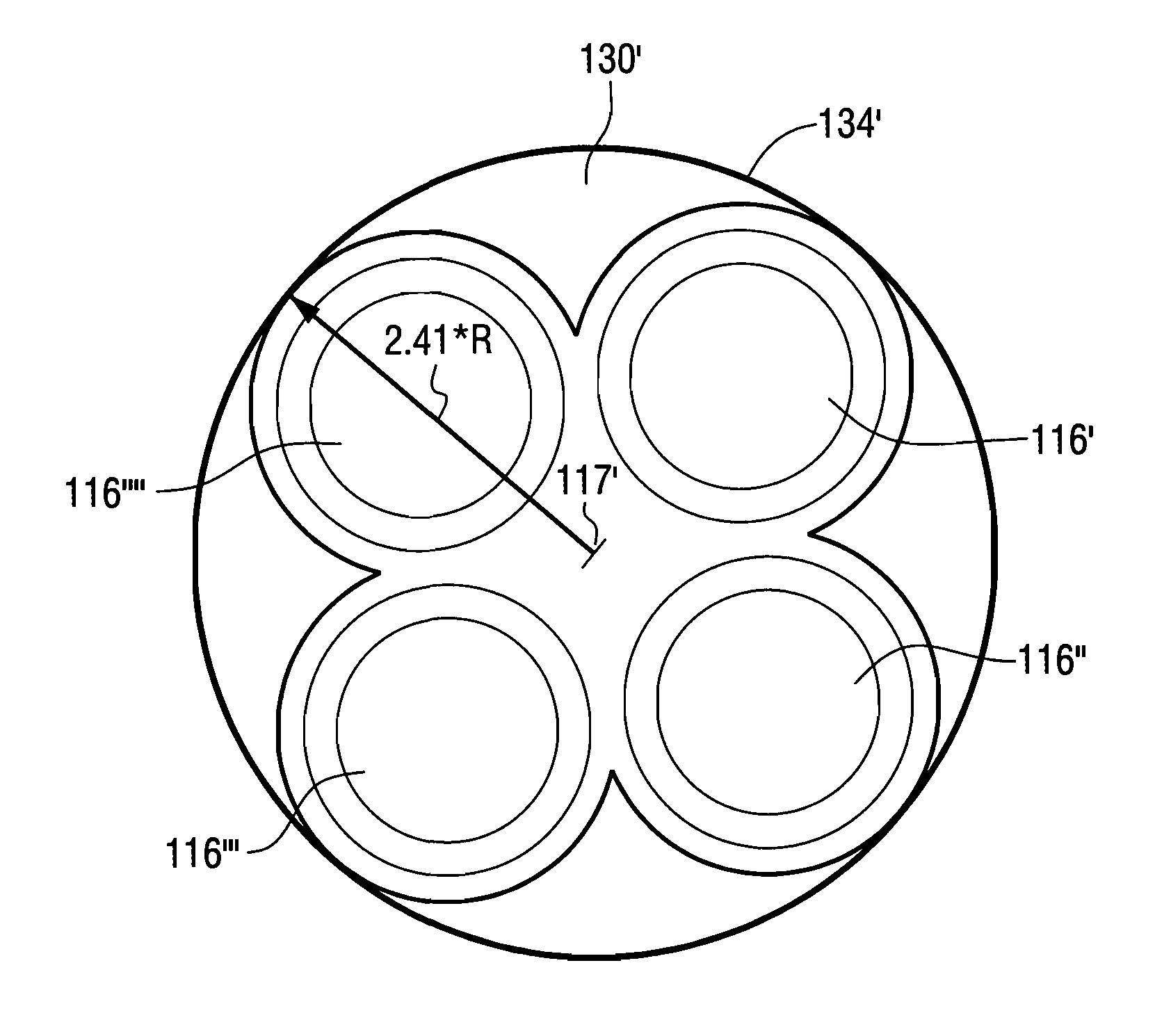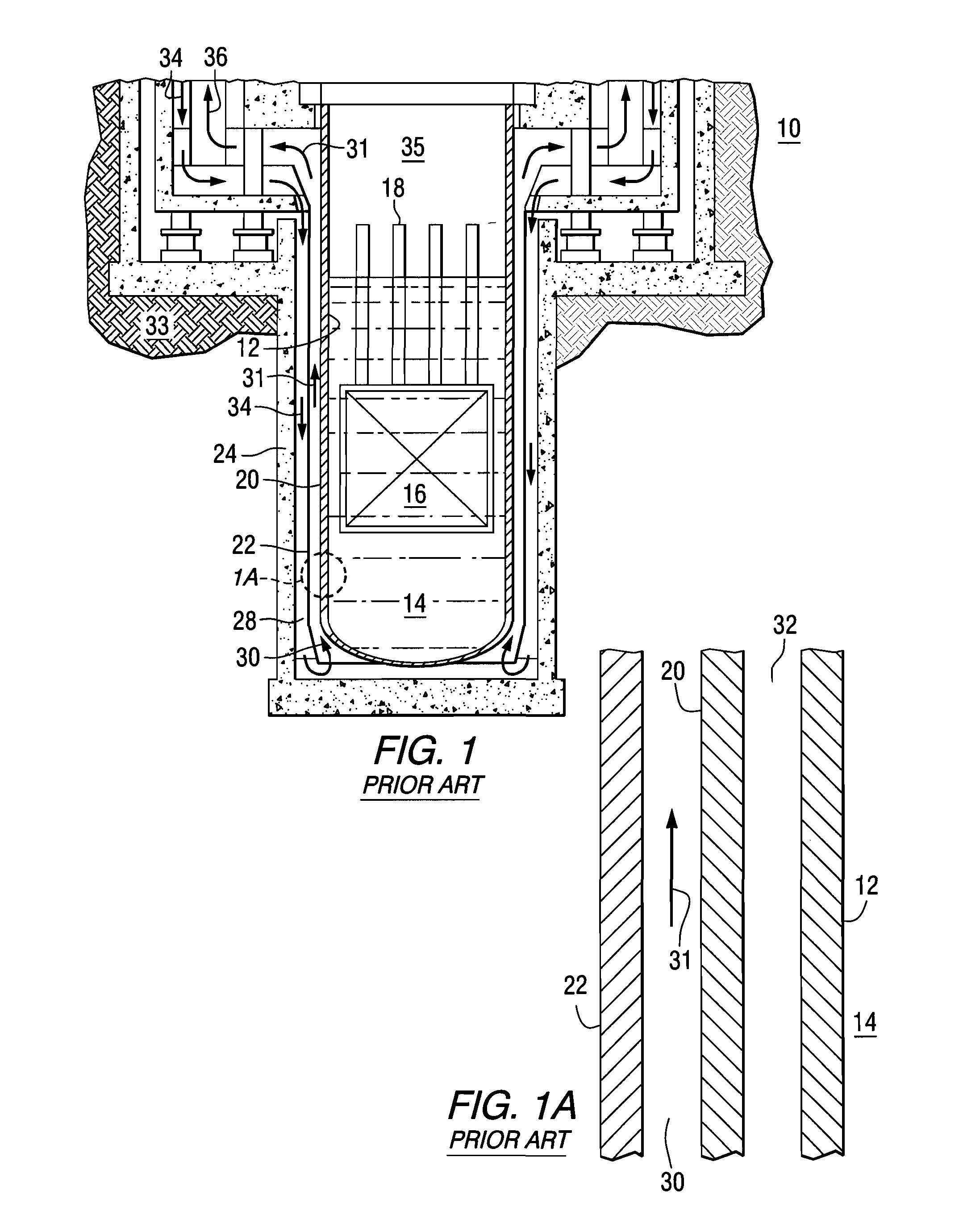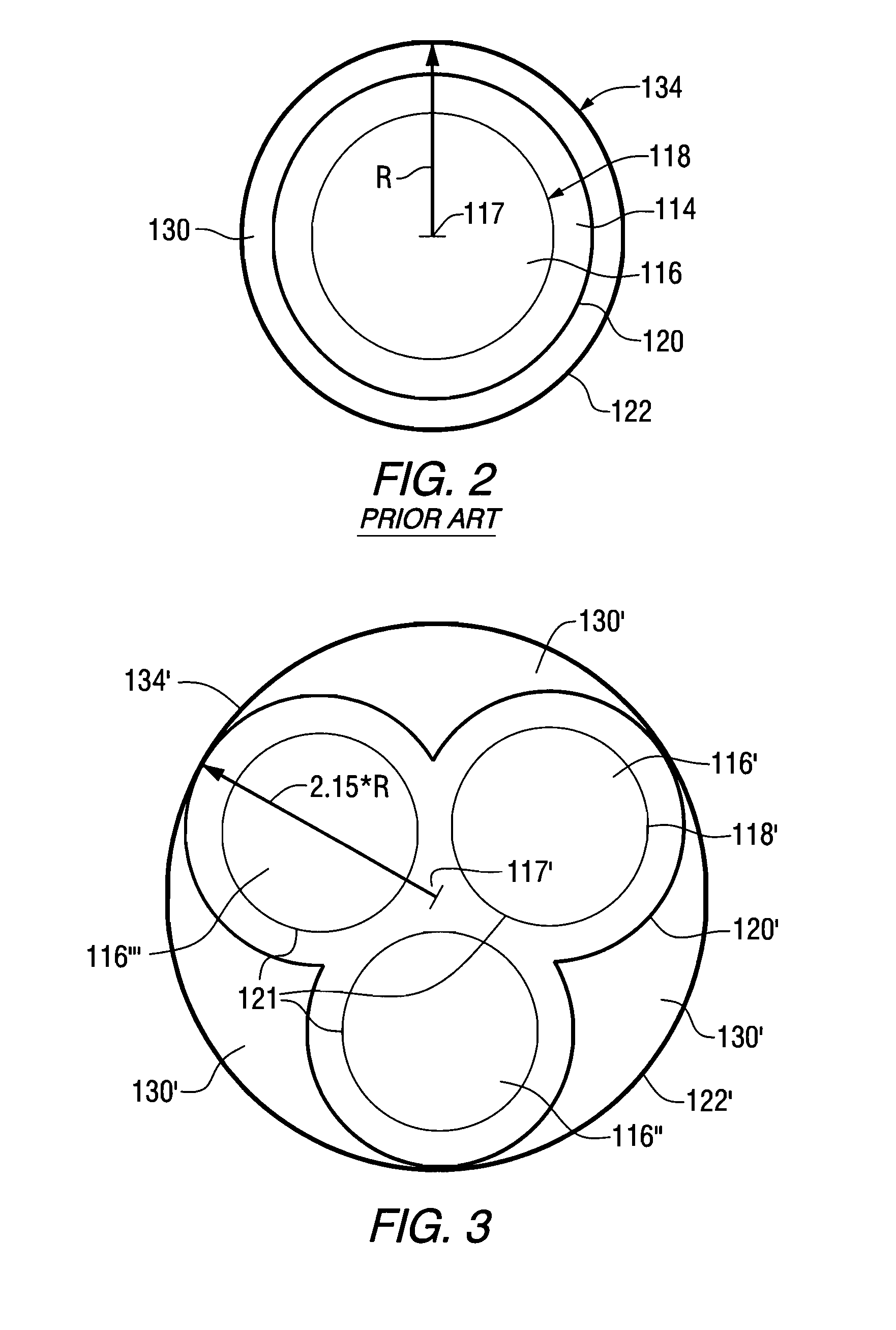Optimum configuration for fast reactors
a technology for reactor cores and reactor cores, which is applied in the direction of nuclear reactors, nuclear elements, greenhouse gas reduction, etc., can solve the problem of no prior art suggestion to try anything other than concentric designs, and achieve the effect of increasing the ratio of inner wall surface area, reducing capital cost, and increasing thermal power
- Summary
- Abstract
- Description
- Claims
- Application Information
AI Technical Summary
Benefits of technology
Problems solved by technology
Method used
Image
Examples
example
Analysis of an X Lobed (X Reactor) Geometry
[0032]
Volume of containment(single lobe)=3.14*H*(R)2
Volume of containment(X lobes)=3.14*H*(1 / cosine(90−180 / X)+1)2 [0033]Utilizing a scale factor of 0.7 which is generally used for scaling the cost of vessels and structures:
Cost ratio X / 1 lobe=[(1 / cosine(90−180 / X)+1)2]0.7=(1 / cosine(90−180 / X)+1)1.4
Power ratio X lobes / 1 lobe=X / 1=X)
Power / cost ratio X lobes / 1 lobe=(X / (1 / cosine(90−180 / X)+1)1.4.
The results of this analysis are shown in the table below. Note that for at least three lobes and up to nine lobes the power / cost ratio is higher than that for a single reactor. Thus, depending on complexity of construction, three to six lobes are most useful since increasing the number of lobes also increases the complexity of making the reactor vessel and the majority of the benefit is gained by the time a six lobed vessel is used.
[0034]
Number of ReactorsRadius of(X)ContainmentPower / Cost Ratio11.001.0022.000.7632.151.0242.411.1652.701.2463.001.2973.301....
PUM
 Login to View More
Login to View More Abstract
Description
Claims
Application Information
 Login to View More
Login to View More - R&D
- Intellectual Property
- Life Sciences
- Materials
- Tech Scout
- Unparalleled Data Quality
- Higher Quality Content
- 60% Fewer Hallucinations
Browse by: Latest US Patents, China's latest patents, Technical Efficacy Thesaurus, Application Domain, Technology Topic, Popular Technical Reports.
© 2025 PatSnap. All rights reserved.Legal|Privacy policy|Modern Slavery Act Transparency Statement|Sitemap|About US| Contact US: help@patsnap.com



